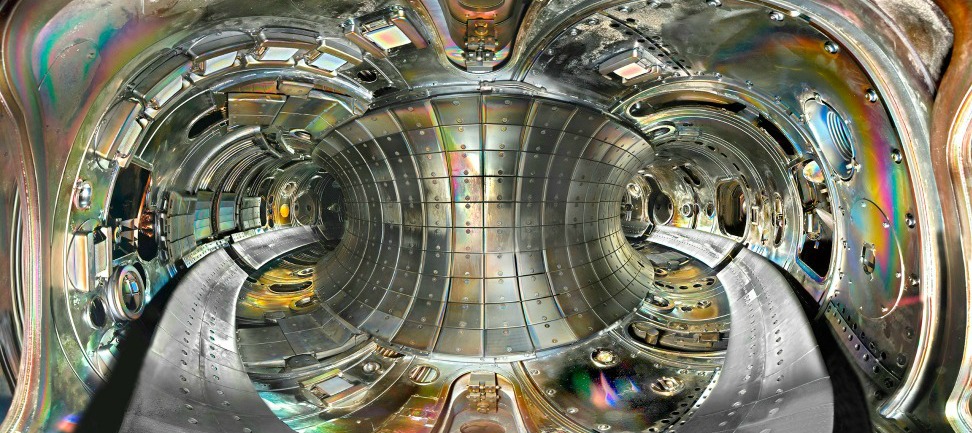TEXTOR : Tokamak Experiment for Technology Oriented Research

For thirty years, the Tokamak Experiment for Technology Oriented Research (TEXTOR) was the site of advanced international fusion research. Its results have been integral to our current scientific understanding of how fusion works. An Institute of Plasma Physics facility that operated from 1963 to 2013, TEXTOR was the central test facility of Forschungszentrum Jülich's program on Nuclear Fusion and Plasma Research.
The IPP program at TEXTOR concentrated on a key problem of fusion power plant development - the interaction of hot plasma with the containment chamber wall. Confronting this challenge involved addressing the need for heat transfer to the wall, and the removal of particles and “ash” (helium formed by deuterium fusion in the core of the plasma) from the plasma.
The TEXTOR tokamak was developed specifically for the IPP program and included a large-area pump limiter system created through collaborations between IAEA, the US (SNL, ORNL, University of California), Japan, and Germany. Known as Advanced Limiter Test II (ALT-II), this pump limiter was optimized for the removal of heat, helium ash, and other impurities; thus making it possible to demonstrate density control and adequate helium removal for the first time worldwide.
Another important limitation on existing technology was the heat load on reactor walls. A fusion reactor has heat loads exceeding or meeting the threshold for damage to existing materials. Consequently, it was of paramount importance to reduce reduce plasma temperatures and local overheating of the walls. Two promising concepts that addressed this challenge were developed at TEXTOR. The first concept relied on a radiating belt generated by seeding the plasma with small concentrations of an impure gas such as neon or argon. The second concept involved the creation of a dynamic magnetic ergodic layer that was expected to enhance plasma radiation and allow for more complete manipulation of the plasma edge.
Principal Investigators: Jose Boedo
UCSD-TEXTOR Program Accomplishments
- Studied the relation between velocity shear and stabilization of turbulence in the edge of TEXTOR
- Found a reduction in edge turbulence levels during RI-mode
- Evaluated the ALT-II limiter performance under various conditions and scaled it.
- Measured particle confinement time using 2-D imaging
- Measured SOL density and temperature decay lengths
- Scaled SOL density and temperature decay lengths with main plasma conditions
- Modeled the edge/SOL in TEXTOR using B2-EIRENE and compared to probe measurements
- Helped prove that a ponderomotive RF barried can be created in a tokamak plasma.
Sources: Forschungszentrum Jülich, ITER
